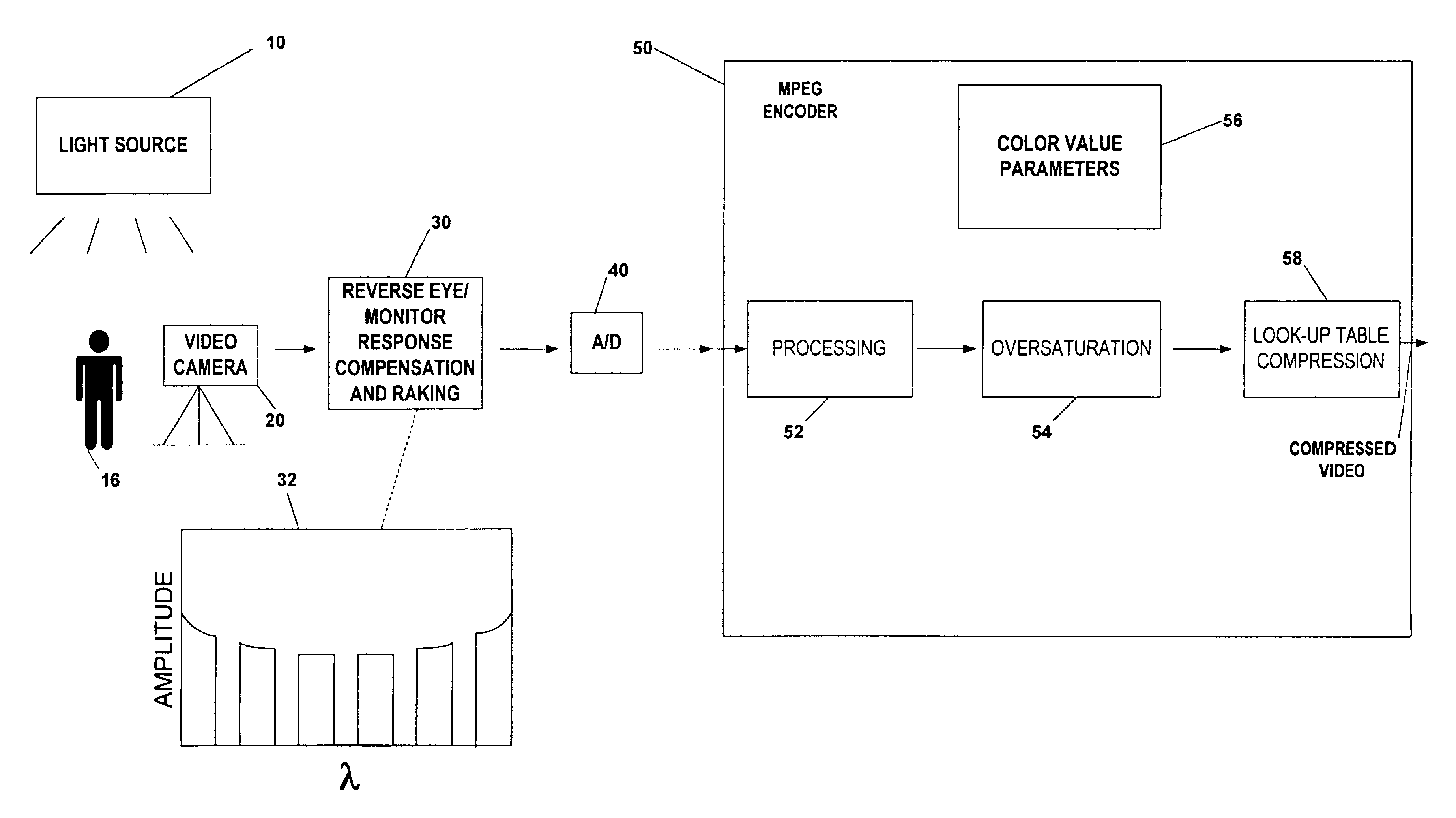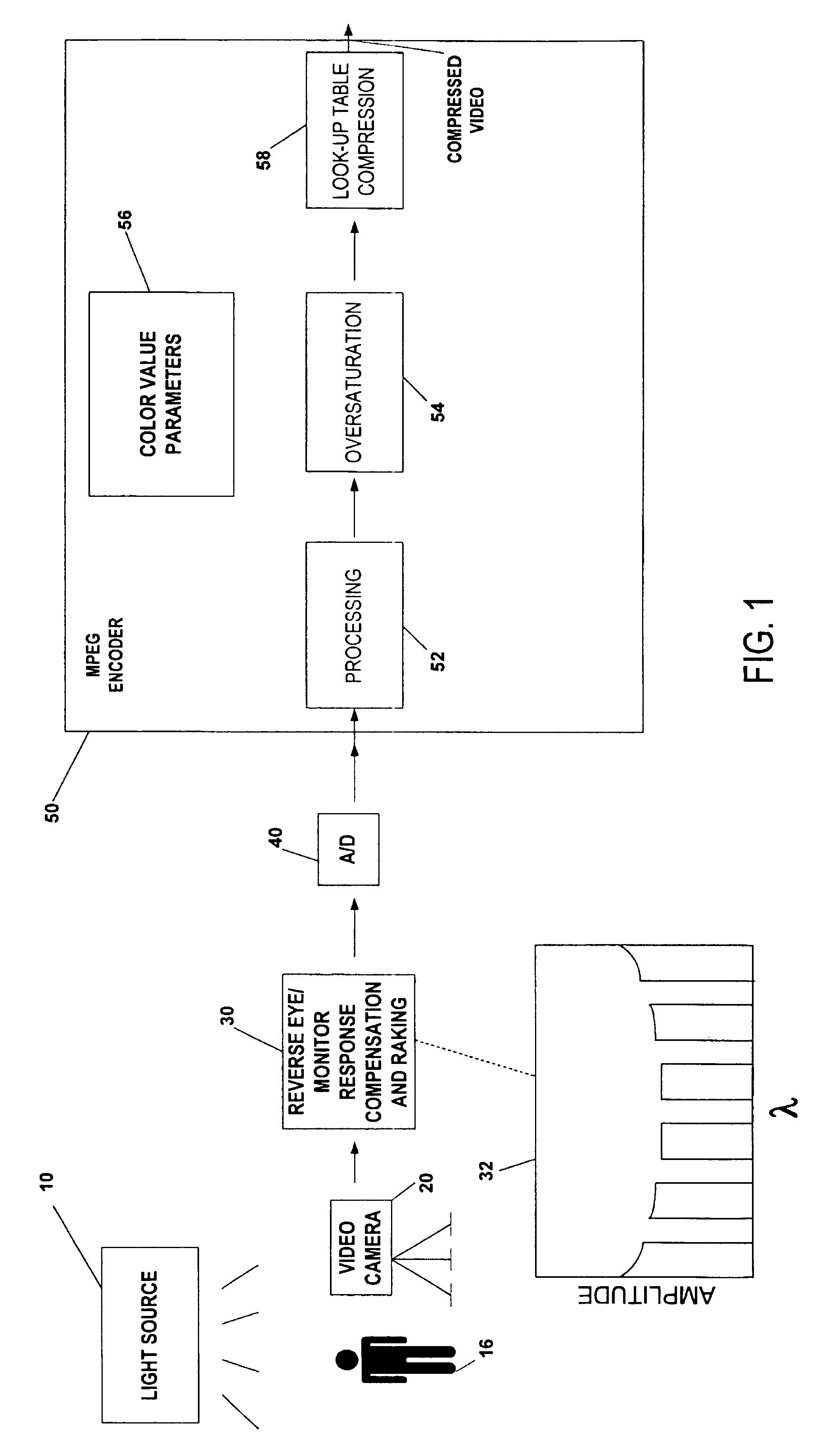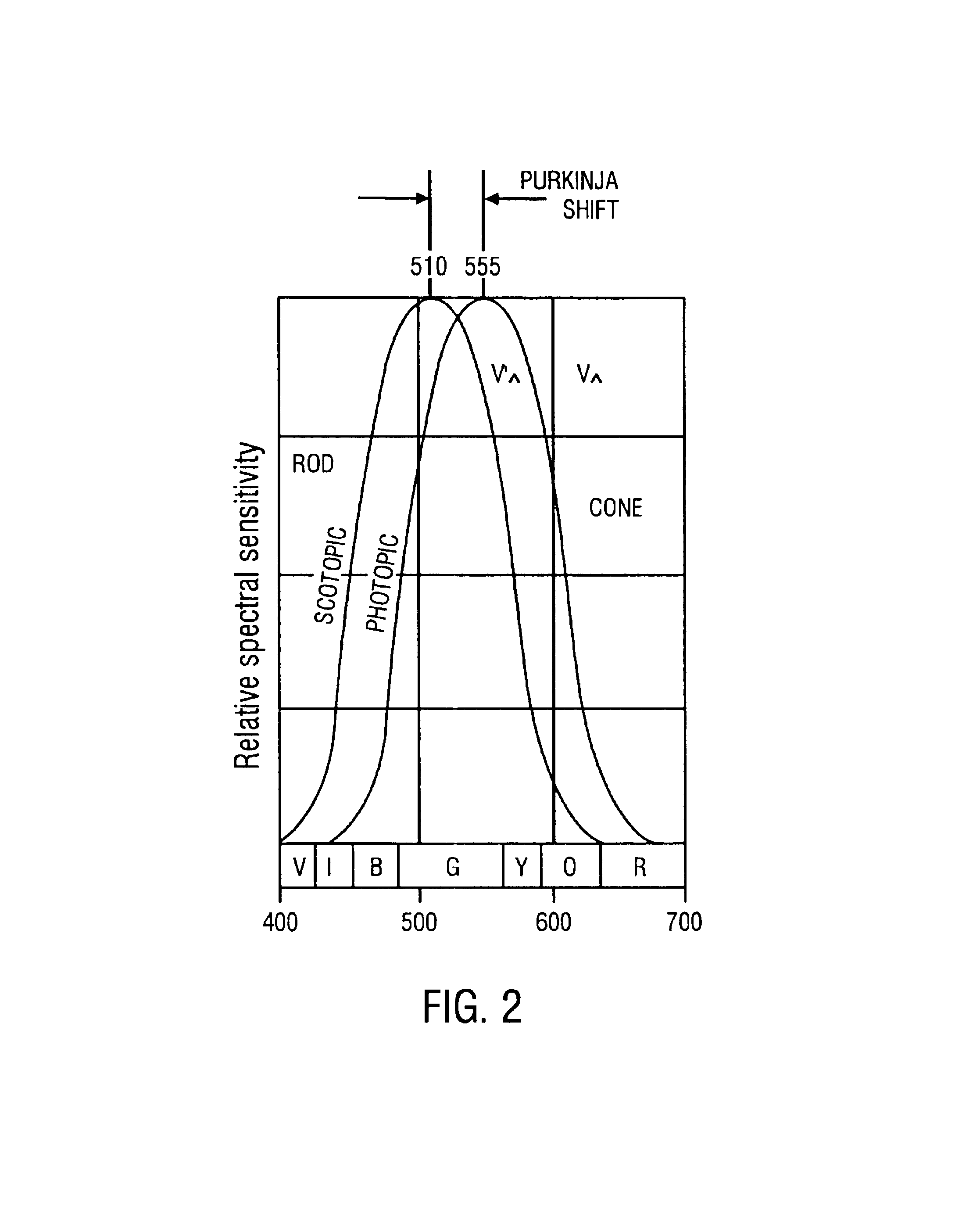[0006]In the invention, frequency information is selectively removed from a video
signal. The removal of the frequency information includes reducing the magnitude of certain frequencies to zero. This magnitude reduction process can be thought of as color “raking.” The color raking is performed periodically in the
frequency spectrum. After the video
signal has been raked, the signal is digitized and then oversaturated, which is the shifting of certain color values to nearby color values. The oversaturation process can be thought of as color
rounding. Color
rounding decreases the cardinal number of color values within the video signal. Both the color raking and the color
rounding is performed in portions of the
visible spectrum in which the
human eye will not noticeably perceive that video information has been lost, i.e., the
image quality will not be visibly degraded. Because raking and rounding both reduce the number of color values that a video data compressor must field as part of its color palette, the computational load on the video compressor is reduced. Additionally, the
bit rate required to support
video image transmission and / or
reproduction is also reduced. That is, the compression ratios are increased. The invention therefore takes
advantage of strengths and weaknesses in the ability of the rods and cones within the
human eye to perceive colors of varying magnitudes and wavelengths.
[0007]The present invention also includes matching of a reduced spectrum lighting source with a reduced color palette within the data compressor. The use of the reduced spectrum lighting source allows the size of the color palette to be reduced without visible degradation in
image quality, thus further enhancing the compression ratios.
[0008]A still further aspect of the present invention involves a method of spectral emphasis, or reverse spectral compensation, of a video signal such that when the video signal is reproduced on a playback device such as a
computer monitor, the
color contrast as seen by an observer of the original scene is preserved. This makes the scene as played back appear more natural looking and easier on the eye. This aspect of the invention can be explained as follows. Playback devices including television sets generally reproduce video signals with
lower intensity levels than the original scene. In general, computer monitors reproduce video signals with intensity levels that are lower still. As the illumination or
reproduction intensity level of a scene decreases, the eye's ability to discern color contrasts within that scene decreases. If the scene is to be reproduced on a device such as a
computer monitor, without any compensation the scene would appear darker than the original scene. The effect on the
human eye is similar to watching a scene at
dusk rather than in full
daylight. Rather than merely appearing as a
lower intensity version of the same scene with all of the same color information, nuances between colors get lost. This decreasing ability to distinguish between colors as
light intensity decreases will be termed “color depletion”. Because the rods and cones within the human eye respond greatest at the middle of the visible
light spectrum and respond less at the higher and lower ends of the spectrum, color depletion is most pronounced at the lower and higher ends of the spectrum, and is less pronounced in the middle, or generally green, part of the spectrum. Color nuances can be significantly restored by performing a spectral emphasis that is the reverse response of the human eye's photopic response. By increasing the intensity levels of the colors on the lower and the higher ends of the spectrum where the color depletion effect is most pronounced, color nuances are greatly restored from the standpoint of the human observer. In this aspect therefore the present invention includes filtering the video signal with a filter whose
frequency response is generally the reverse of the human eye's
spectral response to the output of a video playback device such as a
computer monitor. The result is that to the human observer, the scene on the computer monitor appears to be merely a lower intensity version of the original scene with much of the color nuances remaining, rather than a dim-light, color depleted version of the original scene whose color nuances have been lost.
 Login to View More
Login to View More  Login to View More
Login to View More 


